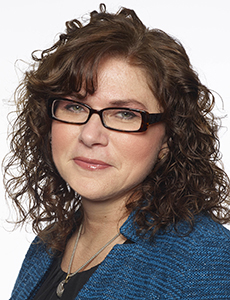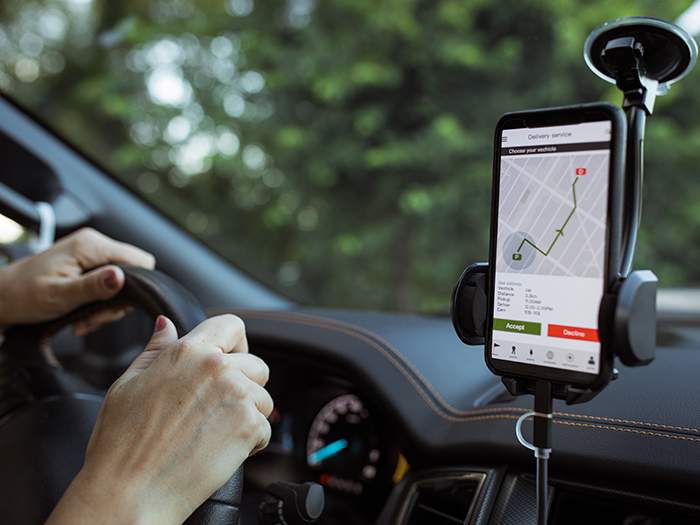Sponsored: AXA XL
A COVID-19 Response Strategy that Shows Resilience in a Changing Environment

Speculation continues around what a “new normal” will look like as we navigate life in a pandemic, and the parameters of normalcy are continually shifting. For leaders of the insurance industry, the first step was setting up and managing a remote workforce without sacrificing the high standards of operational efficiency or a seamless experience for clients.
This is no easy task on its own, but the hurdle of transition isn’t the only one to clear.
As we progress pass the initial upheaval of the economic shutdown and settle into a new rhythm, the focus must shift from managing disruption to conducting business as usual, and finally looking forward to the innovation of new products and services.
The most successful companies will be those that adjust to the changing environment, rather than push forward in spite of it.
“We’ve had to adapt, just as our clients have had to adapt. We’ve come up with new solutions to new risks. And because the situation is always evolving, there’s a constant need to ask the question: How do we ensure that our people, our processes, our data, our systems and our tools will keep working when a another crisis hits?” said Donna Nadeau, now AXA XL’s newly appointed Chief Underwriting Officer for its Americas region. “The ability to answer that question is the hallmark of a resilient organization.”
When COVID cases emerged in the US, Nadeau, then Chief Operating Officer of North America’s Property/Casualty Division, led AXA XL’s incident management response.
AXA XL’s response to the sudden disruption can be broken down into three key stages that allowed it to not only meet changing client needs today, but ensure it could deliver on its promises tomorrow.
Stage 1: Mobilize a Safe and Efficient Virtual Workforce

Donna Nadeau, Chief Underwriting Officer, Americas, AXA XL
The decision to close all offices was made rapidly. In a span of two weeks, almost every U.S. AXA XL employee was told to pack up their desks and get ready to work from home.
“There was a bit of skepticism around whether our network could really support everyone working remotely. We tested the network before we went live and had our IT team constantly monitoring speed and traffic and, candidly, it worked beautifully,” Nadeau said.
Employees were able to use secure personal devices but were also supplied with any extra equipment they needed, including printers and scanners.
“We needed our colleagues to have the same capabilities that they have in the office. Otherwise, we’re not going to be able to serve our customers seamlessly and with the same level of service, and that’s the ultimate goal,” Nadeau said.
A small contingent of essential employees were still required to go into the office to process mail.
“It was surprising to me how much correspondence still comes through good old-fashioned snail mail. And it was a real problem because people were afraid to come into the office,” Nadeau said.
The health and safety of those employees were a top priority, and they were protected via strict protocols around symptom reporting and tracking. Confirmed or suspected cases of COVID-19 among the workforce were recorded diligently so leadership could gain an accurate view of their employees’ needs and the potential impact on workflow and productivity.
Stage 2: Get Back to Business as Usual
Challenging as the process was to transition thousands of employees to remote work, client companies were undergoing similarly stressful changes, and they needed guidance to make the best decisions through the disruption.
“We’ve reached out to our clients and brokers to see what their needs might be. The most common asks that we receive are flexibility around premium payments and consultation on changing exposures,” Nadeau said.
Some companies shut down entirely, dramatically reducing their exposure base. Others shifted gears to generate new business opportunities in light of changing demands. Many manufacturers, for example, started making new products that were compatible with existing processes like masks, medical equipment parts or sanitizer. While this keeps the revenue coming in, it also introduces new risks.
“Clients want us to help them think differently about how they manage risk as they switch gears. So we’ve produced materials like webinars to disseminate some guidance, but we’ve also continued with our risk consulting. We’ve done over 700 virtual assessments,” Nadeau said.
Virtual collaboration is central to the maintenance of relationships and to simply getting business done. This year, with the annual RIMS conference cancelled, Nadeau and the rest of the AXA XL team quickly devised an alternative plan that ensured every meeting still took place.
“Our ‘virtual RIMS’ turned out even better than expected, because virtual meetings mean you’re not distracted by the logistics of a busy schedule. You can focus on the person you’re speaking with,” Nadeau said. “Our experience and the technology that enables it may permanently change the way we do business.”
Stage 3: Prepare for the Challenges of Tomorrow

Risks associated with the pandemic are of course not the only concerns on business leaders’ minds. Other emerging exposures have not taken a back seat, and abandoning the development of new solutions would only be detrimental to both clients and carriers.
One area ripe for innovation, for example, is the gig economy. Because independent contractors working for sharing platforms use their personal vehicles or equipment for commercial purposes, they need insurance solutions that fall somewhere between commercial and personal lines. Until these exist, disputes over who should pay for accidents will persist.
“Part of running business as usual is that we were still able to innovate. So we just entered into a partnership with Marsh on a product called deliveryPRO. It’s a pay-as-you-go solution for U.S. businesses that need to get their products out on the same day, so it’s highly relevant for the gig economy,” Nadeau said.
“In May, we also launched a construction ecosystem project – a digital platform that enables contractors to better collect, analyze and act on job site data. Moving forward on these projects means we can help these sectors not just make it through the pandemic, but arrive even stronger on the other side.”
A History of Growth Indicates a Strong Future
AXA XL’s history is a testament to its own ability to emerge stronger from challenges. In recent years, the organization has been through a slew of integrations, merging many business units following AXA’s acquisition of XL Group in 2018.
“We had to make sure that we were operating efficiently as we brought together the organizations behind the scenes, balancing the internal work against our external commitments. Success wasn’t accidental. It takes a lot of time, and a lot of people. It’s not like flipping a switch, but we wanted it to feel that easy for our clients,” Nadeau said. “We accomplished those integrations within a relatively short period of time, and it’s gone remarkably smoothly.”
These integrations ultimately make the organization stronger and more stable, with access not just to more financial resources, but more expertise as well. As COVID-19 was first making its mark in the U.S., Nadeau’s incident management team was able to collaborate with their counterparts around the world to better understand what was coming and what steps were necessary.
Leveraging global resources and expertise will become even easier as AXA XL undergoes a restructuring that establishes a global underwriting function with distinct business units branching off from it for each of three regions: Americas, Eurasia, and the UK & Lloyd’s markets.
For some, this massive change might seem daunting, especially in the middle of a pandemic. For AXA XL, it’s another opportunity to demonstrate strength, resilience and a guarantee of exceptional going forward.
To learn more, visit https://axaxl.com/.
This article was produced by the R&I Brand Studio, a unit of the advertising department of Risk & Insurance, in collaboration with AXA XL. The editorial staff of Risk & Insurance had no role in its preparation.











